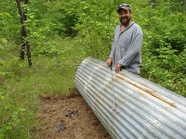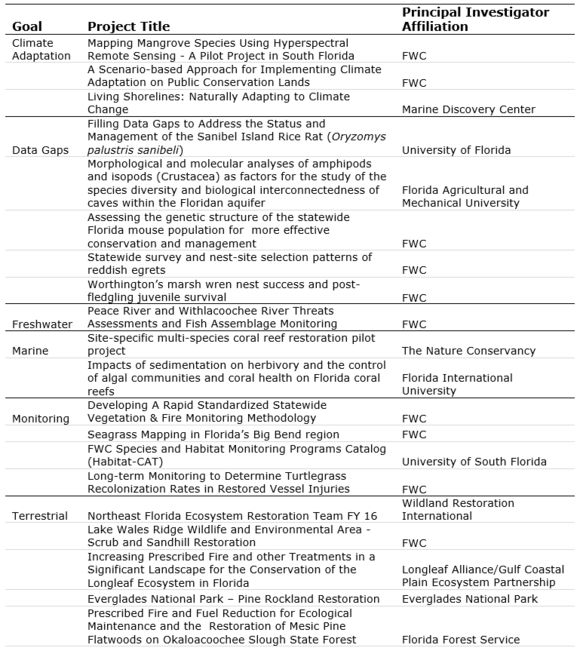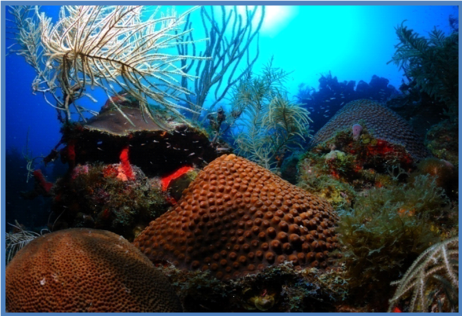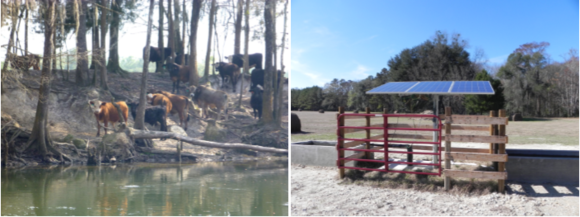Brian Branciforte, FWLI Leader
Florida’s Wildlife Legacy Initiative (FWLI) operates a little
differently than most parts of the Florida Fish and
Wildlife Conservation Commission – a few features make us unique among the rest.
First, our effort is comprehensive, ranging from work in terrestrial, marine, and
freshwater systems to filling data gaps on species of greatest conservation
need, conservation planning, and adaptation to climate change. Since FWLI
doesn’t solely identify with a single species, habitat or in one geographic
part of the state, we lack the convenience of instant identity that comes with
the ability to say, for example, “I work on turtles” – a challenge we willingly
engage.
Another unique feature of the program is our Standing Team, which
serves as our State
Wildlife Grants Committee, assists with our goal teams, and helps guide and provide overall program support and direction. Standing
Team members purposely represent a diverse cross-section of expertise and
program areas. Lastly, FWLI maintains a robust wildlife grants program in which
to engage partners and allocate funds. All of these features are voluntary by
design and part of the culture of FWLI, because we believe it delivers the best
conservation to our state.
If
you were to compare this process with others, it’s unlikely you would find
another like it - and we’re proud to be conserving Florida’s Wildlife Legacy
for future generations along with you.
Back to top
 Please welcome Mike Sisson, our newest Wildlife Legacy
Biologist! Previously, Mike served as the Yellow Creek Watershed
Coordinator for the Jefferson Soil and Water Conservation District in Ohio. In
that position, he coordinated implementation of a Watershed Action Plan. Mike
brings us a variety of knowledge and experience, including an extensive history
of working with partners, stakeholders and private landowners on challenging
conservation projects. Additionally, Mike has a passion for herpetology,
which has led to a variety of monitoring and research projects concerning the
gopher frog and gopher tortoise. Mike is located in Panama City and will be
co-leading FWLI’s freshwater goal. You can reach him at Mike.Sisson@MyFWC.com
|
Back to Top
Florida’s
Wildlife Legacy Initiative (FWLI) is excited to announce projects recently selected
to receive State Wildlife Grant funding! During the
past year, FWLI has worked with numerous external and internal partners in
developing project scopes of work, drafting and posting announcements, and
reviewing submissions. FWLI’s Goal Teams developed the following projects
through both the general and targeted processes. The proposed awards,
listed below, total $1.5 million and will help FWLI achieve its 2012 to 2017 goals by implementing the State Wildlife Action Plan. All projects are expected to begin this
summer.

FWLI
thanks the FWC staff from many sections and the external partners without whom
the latest State Wildlife Grants cycle would not have been successful. FWLI
also thanks the U.S. Fish and Wildlife Service’s Florida field offices and the
Region 4 office in Atlanta for assistance and providing the funding that makes
these projects possible.
If
you are interested in State Wildlife Grant funding,
contact
Florida’s Wildlife Legacy Initiative.
Back to Top
Mary Truglio, Wildlife Legacy Biologist
Coral reefs in the Florida
Keys have become substantially degraded over recent decades due to numerous stressors,
including disease and climate variability. Florida’s reefs now support a simpler coral
assemblage, and have lost the dominant reef-building coral species necessary to
construct the reef framework and fundamental to restoring this ecosystem.
In
recognition of the degraded condition of the state’s coral reefs, Florida’s Wildlife
Legacy Initiative (FWLI) and its partners set an Action
Plan implementation goal to improve coral reef restoration and conserve Species of Greatest Conservation
Need (SGCN) through planning and research. Objective 1 under this goal recently
was achieved through a State Wildlife Grant (SWG) awarded to develop a comprehensive coral reef restoration
plan for Florida. In the past, the
lack of a unified restoration strategy has resulted in duplication of efforts
in some restoration activities while vital gaps in others remain. This plan outlines the essential strategies
necessary to affect a well-coordinated, comprehensive coral reef restoration
effort in Florida.
 |
John Hunt and
Bill Sharp (FWC's Fish and Wildlife Research Institute) coordinated plan development through a series of
meetings and workshops, coordinating with scientists and managers from across
the state to identify and recommend the research and conservation actions
necessary for coral reef restoration. The
identified research needs and prioritization of activities provided in the Plan
are currently being used to fulfill Objective 2 of the goal, which is to
implement the restoration plan using SWG funding through 2017. Although the plan
is only recently finalized, implementation of actions identified by partners
during the workshops has been taking place since 2012. At this time, SWG
funding has supported 14 projects that fill critical information gaps and support
priority activities identified in the plan.
For more information on the Marine
Goal, please contact Mary Truglio.
Back to Top
Lindsay Gardner, SARP Partnership & Communications Manager
Jessica Graham, SARP Coordinator
A 10-year anniversary report, “Conserving
Fish Habitat from the Rivers to the Sea: The Story of the Southeast Aquatic
Resources Partnership,” highlights a decade of success stories achieved by
the Southeast Aquatic Resources
Partnership (SARP) and its partners in the southeastern United States.
SARP’s mission is to preserve globally significant
aquatic species, and the habitats they need to survive, before they are lost
forever. With the support and involvement of the Southeastern Association of Fish and
Wildlife Agencies, National Fish Habitat
Partnership, Florida Fish and Wildlife Conservation Commission, and a
variety of other state and federal agencies, councils and commissions,
conservation organizations and businesses, SARP has served as a successful
catalyst and network builder for habitat restoration, conservation and
scientific research in the region.
The collaboration between SARP, FWC, the West Florida
Resource Conservation & Development Council, Natural
Resources Conservation Service, Florida
Department of Environmental Protection, and The
Nature Conservancy to restore mussel and bass habitat in the Chipola River
is highlighted in the report (see page 9). Restoration efforts focused on
addressing two major threats impacting a 2.3 miles stretch of the river: (1) sediment
pollution from eroding riverbanks and (2) nitrate loading from cattle accessing
the river and the lack of riparian buffers. The restoration project received a
State Wildlife Grant through FWC’s Wildlife Legacy Initiative and was
coordinated by Jessica Graham during her time as the Northwest Regional’s
Wildlife Legacy Biologist. In March, Jessica shifted to her current role as the
SARP Coordinator.
 Left: Cattle freely access the riparian zone, Courtesy of Florida DEP;
Right: With
fencing installed to exclude cattle from the river, cost share programs helped to
develop solar-powered wells to provide an alternative water source, Courtesy of
Jessica Graham
The 14 projects showcased in the anniversary report along
with other projects carried out around Florida are accomplishing the goal of
improving habitat and providing spawning areas for fish, especially for many of
Florida’s Species of
Greatest Conservation Need. The highlighted projects address the regional
habitat objectives of Florida’s
State Wildlife Action Plan, the Southeast
Aquatic Habitat Plan, and national conservation priorities, which all
identified sediment pollution as a leading cause of stream impairment in the
United States.
For more information on SARP’s partners, programs and
conservation successes, please visit www.southeastaquatics.net,
or contact Jessica Graham, SARP Coordinator, jessica@southeastaquatics.net.
Back to Top
We don’t
often take enough time to celebrate hard work and amazing accomplishments.
Florida’s Wildlife Legacy Initiative would like to recognize the following
principal investigators for their State Wildlife Grant-funded projects that
have finished over the past year. The projects below demonstrate the wide
variety of conservation efforts taking place in Florida – research, on-the-ground
management and restoration, partnership-building, and mapping. For
more information on the following projects, please contact Andrea.Alden@MyFWC.com or Robyn.McDole@MyFWC.com.
Congratulations to all on work well done!
1. Are
mooring buoys effective for managing vessel anchoring and coral reef impacts in
south Florida? – Don Behringer, University of Florida (view the project
abstract)
2. Applying
NatureServe Conservation Status Assessments (Global and State Ranks) to Florida
Species of Greatest Conservation Need – Gary Knight, Florida Natural Areas Inventory (view
the FNAI Conservation Status Report here)
3. Survey of Winter-Breeding Amphibian Species in the
Peninsula – Kevin Enge, FWC (view the abstract)
Striped newt - information was gathered on this SGCN and others, Courtesy of Kevin Enge
4. Cooperative Conservation Blueprint Phase III:
Regional Pilot – Brian Branciforte, FWC (view the CCB
website or the abstract)
5. Coral reef restoration and conservation: enhancing
herbivory to restore the health and resiliency of Florida’s coral reef
ecosystem – Bill Sharp, FWC (view the abstract)
6. Apalachicola Longleaf Conservation Initiative
– Dave Printiss, The Nature Conservancy
(view the abstract)
7. Developing Climate Change Adaptation Strategies for
Florida
– Noah Matson and Natalie Dubois, Defenders of Wildlife (view the abstract)
8. Jay Watch – A citizen science program for
adaptive management of Florida scrub – Julie
Wraithmell, Audubon Florida (Jay Watch program
continues through Audubon Florida, view the abstract)
9. Multistate Sandhill/Upland Longleaf Ecological
Restoration Project (Phase II) - Dave Printiss, TNC, and Heather Hitt, FWC (View the abstract.
Florida’s portion is complete, and partnering states - Alabama, Georgia,
Louisiana, & Mississippi - will finish in 2015.)
Prescribed fire, Courtesy of Dave Printiss
10. Developing a Comprehensive Strategy for Coral Restoration
for Florida – John Hunt and Bill Sharp, FWC (see article above: Working to Restore Our Coral Reefs)
11. The impact of mosquito control pesticides and
elevated temperature on coral larvae physiology and settlement
– Cliff Ross, University of North Florida
(view the abstract)
12. Florida
Vegetation and Land Cover Map – Beth Stys, FWC (Updated and
improved land cover map of Florida was produced. The final map has been adopted by FWC and FNAI as the Cooperative Land Cover Map, CLC, version 3.0)
13. Shorebird
and Seabird Conservation Program – Nancy Douglass, FWC (supporting the expansion of the Florida Shorebird
Alliance, view abstract)
14. Florida Fire and Ecosystems Support Teams - Zach Pruzak, TNC (view the abstract)
15. Investigation of a previously undescribed octocoral disease affecting the Florida reef tract - Vanessa Brinkhuis, FWC (view the abstract)
Back to Top
|